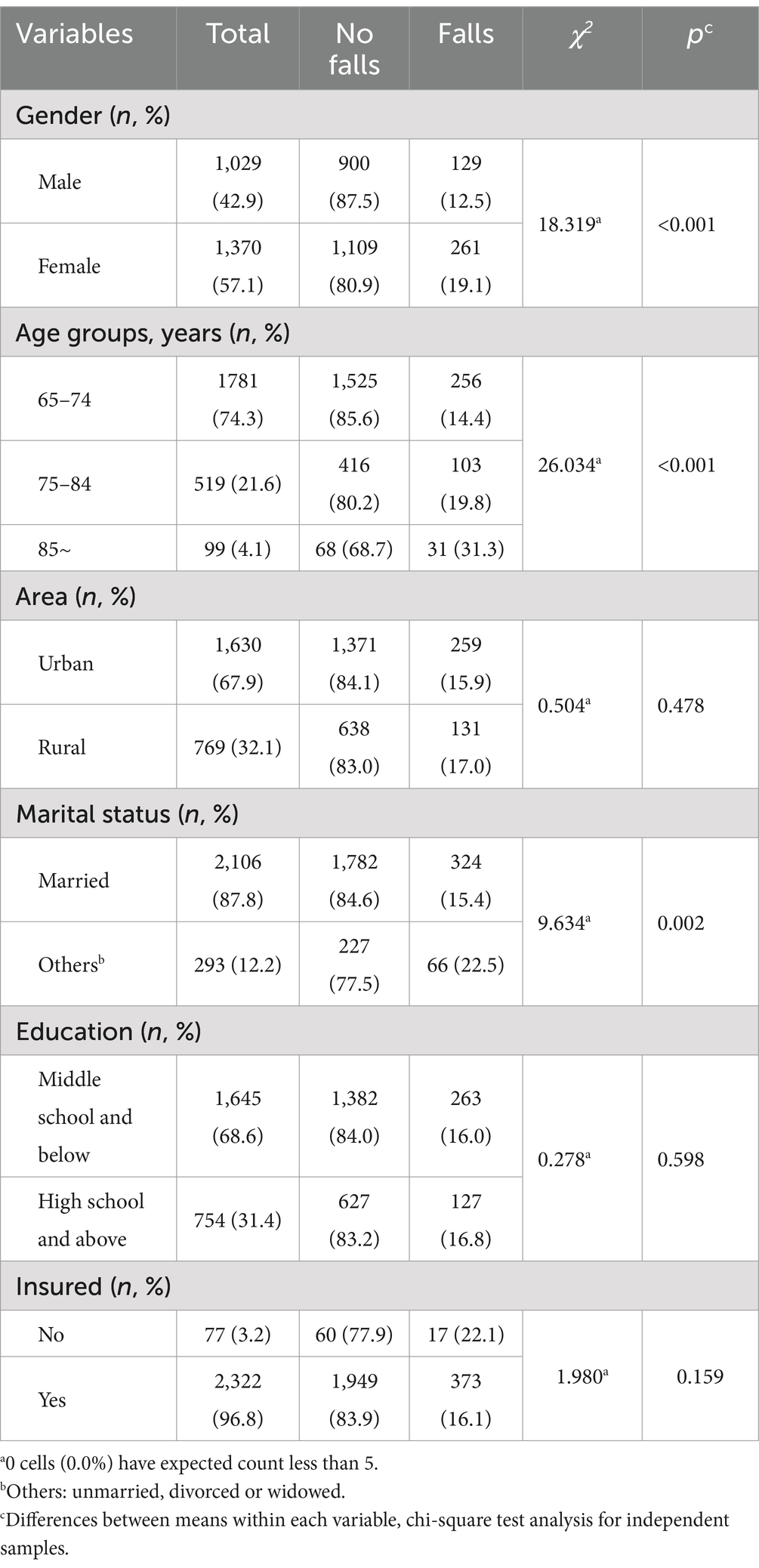New

Prevalence Of Falls And Associations With Family Functioning Among Community-dwelling Older Adults In Guangzhou, China

IntroductionFalls are the primary cause of unintentional fatalities among individuals aged 65 and older. Enhancing research on fall prevention among older adults is an urgent priority. Consequently, this study aims to investigate the prevalence and influencing factors of falls among community-dwelling older adults in Guangzhou, China, with a particular emphasis on the impact of family functioning.MethodsWe used a multi-stage stratified cluster random sampling technique to successfully survey 2,399 individuals aged 65 and above across 11 districts in Guangzhou City. Data on sociodemographic characteristics, health and lifestyle factors, and fall incidents were collected through telephone interviews. Chi-square tests, Lasso regression, and logistic regression were utilized to pinpoint fall risk factors. Association rule mining uncovered the relationships between falls and associated variables.ResultsA total of 390 participants reported experiencing falls, the prevalence of falls among older adults was 16.3% (95%CI: 14.82% ~ 17.78%). Logistic regression analysis identified several risk factors for falls among older adults: female [OR = 1.511, 95%CI (1.188–1.922)], age 85 years and older [OR = 2.332, 95%CI (1.447–3.758)], stroke [OR = 1.821, 95%CI (1.038–3.192)], hypoglycemia [OR = 1.639, 95%CI (1.228–2.186)], visual impairment [OR = 1.418, 95%CI (1.097–1.833)], need to be cared for [OR = 1.722, 95%CI (1.339–2.215)], chronic pain [OR = 1.663, 95%CI (1.302–2.124)], and anxiety [OR = 1.725, 95%CI (1.243–2.395)]. In addition, it was shown that a well-functioning family was a protective factor against falls [OR = 0.589, 95%CI (0.44–0.789)].ConclusionThe prevalence of falls among community-dwelling older adults in Guangzhou City was high, and the influencing factors were complex. It is recommended to develop and implement comprehensive intervention measures for high-risk groups, including those who are females, older adults, and suffer from chronic diseases while paying special attention to the care of family members for older adults.


